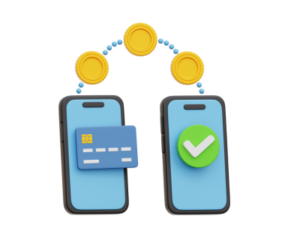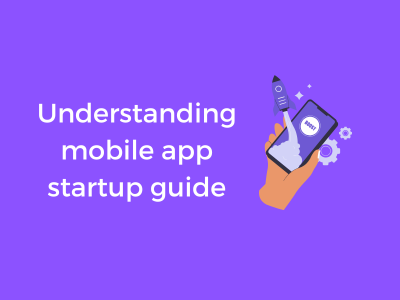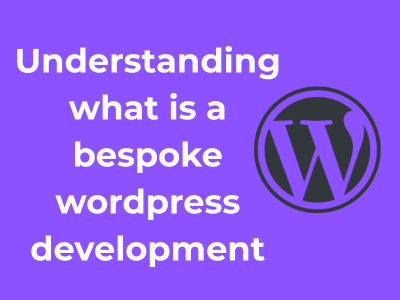Before diving headfirst into the exciting world of app design and development, you need to pause and ask yourself one very important question: why? Why are you building this app? What problem or need does it address, and who is it for?
Defining the purpose of your app is critical—think of it as setting the foundation upon which everything else will rest. Without a clear purpose, even the most beautifully designed app can wander aimlessly, failing to connect with its audience or provide real value. Let’s explore how you can get started on the right foot.
Competitive Analysis: Standing Out in a Crowded Market
So, you’ve got this amazing app idea bubbling up in your mind, right? That’s fantastic! But before you dive in, here’s the truth: you’re not alone. The app market is one gigantic ocean filled with thousands of apps swimming to capture users’ attention. Don’t sweat it, though! That’s where competitive analysis becomes your trusty compass, guiding you to not just stay afloat but shine. Let’s talk about how to nail it.
Why Does Competitive Analysis Matter?
Think of it this way—would you open a coffee shop without checking out other cafés in your area? Probably not. Similarly, diving into the app world blindfolded can lead to a lot of wasted time and resources. Competitive analysis helps you:
- Identify your competitors and study their strengths and weaknesses.
- Discover market gaps that your app can uniquely fill.
- Strategize how to make your app more appealing than others.
Essentially, it’s about figuring out how your app can stand tall in a sea of icons on the App Store or Google Play.
Start by Identifying Competitors
Your first step? Look for similar apps out there. Let’s say you’re building a fitness app. Search for others that target your audience. A quick browse in app stores, keyword research, and reading user reviews can give you a clear idea of who you’re up against.
Don’t just stop with direct competitors (apps doing exactly what yours will). Keep an eye on indirect competitors, too—apps that don’t do exactly the same thing but still target a similar user need.

Dive Deep into Competitors’ Strengths and Weaknesses
Once you’ve found a handful of competitors, you’re ready to get into the juicy part—analyzing them! Here’s a checklist to guide you:
- Features and Functionality: What features are they rocking? Are they solving user problems effectively, or are there common complaints you could improve upon?
- User Experience (UX): Is their interface user-friendly? Is the onboarding process smooth, or does it leave users frustrated? Bonus tip: download and use these apps yourself to see how they feel!
- Pricing Model: Are they offering freemium plans, in-app purchases, or subscription models? Knowing this can help you set your pricing strategy just right.
- Marketing Approach: Check out their app descriptions, screenshots, videos, and other promotional materials. Analyze their social media presence and reviews from users. What’s resonating, and what’s not?
Find Your Differentiator
Here’s where the magic happens. After all this analysis, look for gaps in the market or problems current apps aren’t solving effectively. That’s your opportunity! What unique feature does your app bring to the table? Maybe it’s innovative AI-driven tools, or perhaps it’s a sleek, distraction-free design. Whatever it is, let it shine!
Don’t Stop There: Stay Updated
The app market evolves constantly, just like new trends in fashion. Keep an eye on industry advancements and update your competitive analysis periodically. Trends change, user preferences shift, and new players often enter the game. Staying informed is your secret weapon to staying ahead!
Understanding Target Users and Their Needs
So you’ve got a brilliant idea for a mobile app—fantastic! But before you dive headfirst into development, let’s talk about one of the most important factors that will determine your app’s success: your users. Who are they, what do they want, and how can your app make their lives easier? Let’s explore how you can uncover these insights and create an app that truly resonates with your audience.
What Does ‘Knowing Your Users’ Really Mean?
Imagine you were throwing a party. You wouldn’t plan everything without considering what your guests enjoy, right? It’s the same with your mobile app. Knowing your users means understanding their motivations, preferences, habits, and pain points. It’s not just about demographics (age, location, occupation), but also psychographics (attitudes, interests, and lifestyle).
Here’s the golden rule: The more you know about your users, the better you can serve them.
How to Dive Into the World of Your Target Users
Here are a few tips and methods to truly understand your target users:
- Conduct user surveys and interviews: Don’t be shy—reach out to potential users and ask about their needs, challenges, and preferred solutions. Platforms like Google Forms, Typeform, or SurveyMonkey make this easy.
- Create user personas: A user persona represents a typical user of your app. Define characteristics like “Anna, the busy mom who struggles with meal planning” or “Alex, the young professional who needs productivity tools on-the-go.”
- Analyze user behavior: Check out forums, social media groups, and platforms like Reddit or Quora where your audience hangs out. What problems are they discussing? What apps or tools are they already using?
In short, think of understanding your users as detective work—research, observe, and then empathize.
Avoiding the “Assumption Trap”
One rookie mistake? Building an app based on assumptions. Just because you think an idea is genius doesn’t mean it resonates with others. Talk to real users early and often to validate your assumptions. Surveys, beta testing, and usability testing are invaluable for this. Remember, your app is for your users, not for you!
Bring the Wow Factor—Catering to Your Users’ Needs!
Once you’ve gathered all the data, what’s next? It’s about designing an app experience that solves user problems and goes the extra mile to “wow” them. People gravitate toward apps that feel intuitive, save time, or fulfill a specific need in a new way. Some pointers to keep in mind:
- Simplify processes: If users hate manually tracking expenses, make it seamless and automated in your app.
- Speak their language: Use copy and visuals that align with your target demographic’s preferences—for instance, fun emojis for Gen Z or clean design for working professionals.
- Listen and iterate: Users evolve. So should your app. Gather feedback during and after launch to continuously improve the user experience.
Budgeting and Financial Planning for Your Mobile App
So you’ve got this fantastic mobile app idea and you’re ready to take the world by storm—yay! But wait, before you dive headfirst into development, let’s talk about something that’s not-so-glamorous but absolutely essential: budgeting and financial planning. Without a solid financial plan in place, even the best app idea can fizzle out. Let’s break this down into simple, actionable steps and make budgeting your new best friend!
1. Start With Your Vision and Prioritize
First things first, what’s the scope of your app? Are you building a robust e-commerce platform or a simple utility tool? Knowing your vision helps you figure out how much money you’ll need and where to allocate it. Prioritize key features—those core functionalities that define your app’s purpose. Tip: Start lean and aim for a Minimum Viable Product (MVP). Adding all the bells and whistles can come later, trust me!
2. Build a Comprehensive Cost Breakdown
A lot goes into creating a mobile app, and understanding the individual cost components can save you from budget surprises. Let’s take a closer look at where your money might go:
- Development Costs: This covers design, coding, and testing. Costs vary based on whether you use in-house employees, freelancers, or agencies.
- Tools and Software: Think of licenses for design tools, project management software, and testing frameworks.
- App Store Fees: Planning to launch on the Apple App Store or Google Play? Account for their developer fees (e.g., $99/year for Apple, $25 one-time fee for Google).
- Marketing and Advertising: You’ll need funds to shout about your app from the rooftops—social media ads, content creation, influencer partnerships, and more.
- Ongoing Maintenance: Bug-fixing, updates, and app enhancements need consistent budgets—you don’t want to ignore them!
3. Decide Between Bootstrapping and Fundraising
Next comes the big question: how will you fund this dream of yours? From personal savings (a.k.a. bootstrapping) to angel investors or even crowdfunding, there are multiple ways to secure funds. Each option has pros and cons:
- Bootstrapping: Keeps you in full control but relies entirely on your resources.
- Investors: Provide more capital but often want equity in return. Choose them wisely!
- Crowdfunding: Lets you validate demand and build hype before you launch.
Whichever route you take, make sure you keep that cash flow steady—unexpected costs are almost inevitable!
4. Plan for the Long Haul
Your app’s journey doesn’t end with its launch—it’s just the beginning. Set a financial buffer for things like user support, server costs, scalability adjustments, and app updates. Also, keep a close eye on where your returns are coming from. Are you monetizing through in-app purchases, ads, or premium downloads? Assess what works and pivot as needed.
5. Track, Measure, and Adjust
The key to good financial planning is flexibility. Set a regular schedule—weekly or monthly—to review your expenses and revenues. Did you overspend on ads but underinvest in user experience? That’s okay—you can always tweak your budget. Tools like QuickBooks or Wave can also help you stay on top of your app-related finances.
Building a High-Performing Team for Development
Let’s talk about one of the most crucial elements for your app’s success: your team. Assembling a high-performing team can be the difference between a mediocre app and a groundbreaking one that users rave about. Remember, even the best app ideas on paper need brilliant minds to bring them to life. Don’t stress—I’m here to walk you through how to build your dream team!
What Roles Do You Need?
First off, let’s break down the kinds of team members you need. Here’s a handy list of core roles for your mobile app dream team:
- Project Manager: The person who ensures the project stays on track, manages the timeline, and makes sure every piece of the puzzle fits together seamlessly.
- UI/UX Designer: Think of them as the artist and storyteller. They create an attractive interface and ensure it provides an intuitive user experience.
- Developers: These are your coders—the ones who bring your app’s functionalities to life. You may need specialists in iOS, Android, or even back-end systems.
- Quality Assurance (QA) Tester: This person is your app’s first critic, hunting down bugs and ensuring your app runs smoothly for end users.
- Marketer or Strategist: While not directly involved in the building process, having someone with an eye on how you’ll reach users is invaluable from day one.
Hiring Tips for the Perfect Team
Now that you know the roles you’re looking for, how do you find the right people? Here are my top tips:
- Focus on Skill and Passion: Don’t just hire tech-savvy individuals; look for those passionate about your app’s mission. People who care deeply about the project will go the extra mile when it counts.
- Seek Diversity: Building an app involves creativity, problem-solving, and innovation. A team with diverse skills, backgrounds, and perspectives can spark ideas you may have never thought possible.
- Don’t Overlook Soft Skills: A brilliant coder who doesn’t communicate well can slow down progress. Look for team members with great collaboration and problem-solving skills.
- Consider Freelancers or Agencies: If hiring full-time staff feels daunting or out of budget, consider working with freelancers or development agencies, which can offer flexibility.
Building Team Chemistry
Here’s something most people don’t give enough thought to: team culture. A high-performing team isn’t just about individual brilliance; it’s about how well all of those individuals work together.
- Foster Clear Communication: Use tools like Slack or Trello to keep everyone aligned on goals and progress.
- Promote Collaboration: Create a working environment where every team member feels they have a voice. Host brainstorming sessions and encourage input from all roles.
- Celebrate Wins: Whether it’s completing a milestone or squashing pesky bugs, take time to acknowledge everyone’s hard work and boost morale.
Remote or Onsite?
With today’s technology, you’re no longer limited to building an onsite team. Remote teams can save costs and open up access to global talent. However, it’s important to schedule regular virtual check-ins to maintain team cohesion. If an onsite team makes more sense for you, try to create a comfortable, inspiring workspace to keep creativity flowing!
Choosing the Right Technology for Seamless Performance
So, you’ve got that amazing mobile app idea, a solid team to build it, and the runway to bring it to life. What’s next? It’s time to dive into one of the most crucial decisions: choosing the right technology stack. But don’t worry—this doesn’t have to be overwhelming. Let’s break it down step by step, so your app thrives and leaves users amazed by its seamless performance.

Why Tech Choices Matter
Think of your app like a car. The technology stack is the engine that keeps everything running smoothly. If you choose the wrong one, your app might lag, crash, or frustrate users to the point where they click delete instead of download. That’s why the right tech not only powers performance but also makes development and updates easier down the line.
Native vs. Cross-Platform: The Big Decision
- Native Apps: These apps are specifically built for one platform, like iOS (using Swift or Objective-C) or Android (using Kotlin or Java). They usually offer the best performance and a more personalized user experience.
- Cross-Platform Apps: These use frameworks like Flutter or React Native to create apps that work on both iOS and Android using a single codebase. They’re ideal for saving time and costs if you’re looking to launch faster.
If performance and platform-specific features (like iOS widgets or Android custom notifications) are a top priority, native might be your best bet. But if budget and speed to market take precedence, a cross-platform approach will have your back.
Backend: The Brain of Your App
While your frontend is the face that users interact with, the backend is the brain working tirelessly behind the scenes. Here are a few decisions you’ll make:
- Pick a backend language and framework: Technologies like Node.js, Python with Django or Flask, and Ruby on Rails are popular choices for speed, scalability, and developer-friendly environments.
- Host in the cloud: Platforms like AWS, Google Cloud, and Microsoft Azure can handle your app’s server and database needs while ensuring maximum uptime.
Databases for Lightning Performance
Every app relies on a database to store critical data. Depending on your app’s needs, you might consider:
- SQL databases: Great for structured data and complex queries.
- NoSQL databases: Perfect for flexibility and handling unstructured data like user comments and social feeds.
Some solid options include MySQL for SQL or MongoDB if you’re leaning toward NoSQL.
Don’t Forget Security and Scalability!
Your users trust you with their data, so security should be baked into your technology choices. Use encryption, two-factor authentication, and regularly update software to keep hackers out. And think long-term: as your app grows, it must handle increasing users without breaking a sweat. That’s why scalable infrastructure is a must-have.
Testing, Launching, and Marketing Strategy Simplified
Congratulations! At this stage, you’re at the brink of unveiling your mobile app to the world. But hold your horses – before you take a victory lap, it’s crucial to ensure your app is polished, up-to-the-mark, and fully prepared to shine in the spotlight. Here’s how to simplify testing, launching, and marketing with some practical and easy-to-follow advice.
1. Testing: Polishing Every Corner
Testing is your best friend when it comes to delivering a seamless user experience. While it’s tempting to rush through this phase, taking the time to thoroughly test your app will pay off in spades.
- Engage real users for beta testing: Your app may work perfectly on your laptop or test devices, but what do real users think? Deploy beta testing with people from your target audience to catch bugs and usability hiccups that you may have missed.
- Test across multiple devices: Don’t forget, users will be interacting with your app on various screen sizes and operating systems. Test it on both iOS and Android platforms to ensure compatibility and performance.
- Check for functional and non-functional issues: Beyond the app’s functionality, focus on aspects like loading speed, security, and ease of navigation. These are critical in winning user trust and retention.
The goal here is to identify every possible point of friction and resolve it. A polished app makes for happy users!
2. Launching: Making a Grand Entrance
The launch is the big moment, so let’s get it right and make it unforgettable!
- Create a buzz: Build anticipation before the actual launch. Utilize teaser posts, countdowns, or even a pre-launch landing page to spark curiosity.
- Strategize your app store optimization (ASO): This is the SEO of the app world! Use relevant keywords in your app title and description, invest in high-quality screenshots, and create an engaging promo video if possible.
- Soft launch with specific markets: If possible, release your app in a small market first. This allows you to gather feedback and make improvements before scaling up globally.
Launching is just the starting line of your app’s public journey, so treat it like an event worth celebrating!
3. Marketing Basics: Spreading the Word
The app market is undeniably crowded, but the good news? A smart marketing strategy can make all the difference.
- Tap into social media: Platforms like Instagram, TikTok, or LinkedIn (depending on your audience) are excellent places to share your app’s story and engage with users.
- Reach out to influencers or reviewers: Collaborate with bloggers, vloggers, or app reviewers in your niche. Their endorsements can amplify your app’s reach.
- Invest in paid ads: Running targeted app install ads on platforms like Facebook or Google can bring in a steady stream of new users.
- Encourage reviews and ratings: The more (positive) reviews your app garners, the better its visibility on app stores. Build-in subtle prompts for users to leave their feedback.
The key takeaway? Consistency is everything. Keep the marketing engine running long after your launch day to maintain momentum and user acquisition.











